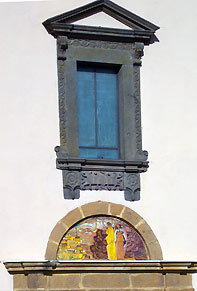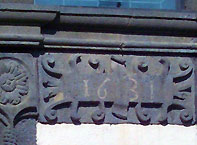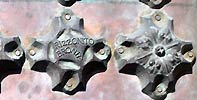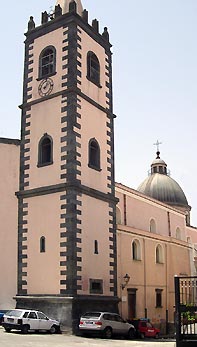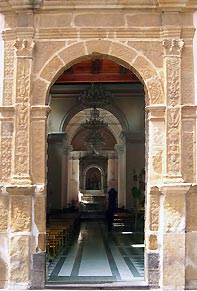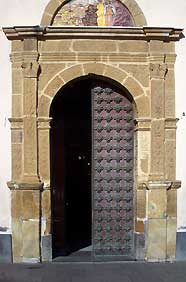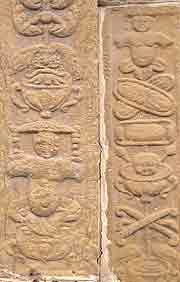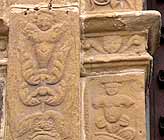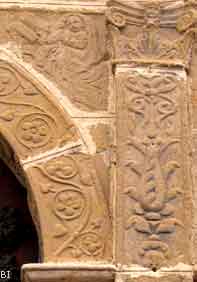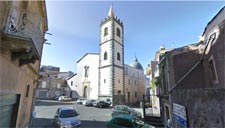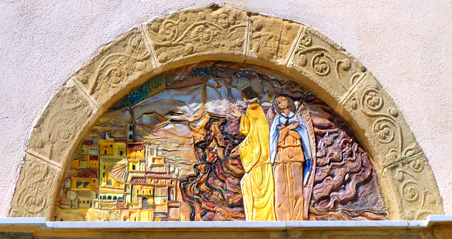| ||||||||||||||||||||||||
| ||||||||||||||||||||||||
The Sanctuary is one of the oldest religious monuments in the city. It stands on the western edge of the town, in the lower part of the old historic center, once delimited by Via Santi today by the route of the ring road that from the Circum railway station passing behind San Vito descends towards the Sciarotta district. The exterior of the church, with a flat gabled fašade and adjoining bell tower on the right side, is built with load-bearing masonry in lava stone ashlars and lime mortar; it has a large hemispherical pointed dome with a lantern and a gabled roof with wooden trusses and a covering of terracotta tiles. It combines in a single wonderful image the solid expressiveness of the complex and the innovative strength of the architectural elements of Renaissance inspiration. The internal space with a prevalent longitudinal development, has a rectangular nave and a deep quadrangular presbytery.
The building certainly dates long before the joining of the 24 setştlements (wanted by Carlo V in 1535): the big bell, in fact, shows the date of 1535 (the worşding says "Antoninus Sagla I fecit, MCCCCCXXXV"), and the church already appears in the matrimonial registers of 1505.
At the time of the transfer and unification of the farmhouses (1535 -- 1548), the churchwas, according to what the historian brontese Benedetto Radice writes ("Historical memories of Bronte"), was reconstructed and enlarged and, after the arrival of the statues of the Annunciated around 1543, the rising new town was put under the protection of the Madonna Annunziata, giving the inhabitants of the old farmhouses a new common identity. Monsignor Ludovicus de Torres, the bishop of Monreale whoch visited Bronte in 1574, wrote to have found "altar decenter ornatum" and praised "illum (the substitute of the church, Don Antonio Ciraldo) et confrates (the confraternity of the Madonna Annunziata) et monuit to perfectionem novae fabricae". Almost fifty years later, in 1625, the bell tower was built (the original door was where the altar of the NativitÓ is found, now to the right coming in). The fašade of the sanctuary was completed in 1631, and few years later, (in 1651) the canopy truss was installed, as it reads on the beam near the chorus. The chorus and the dome were added in 1811. | ||||||||||||||||||||||||
| ||||||||||||||||||||||||
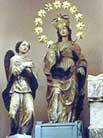
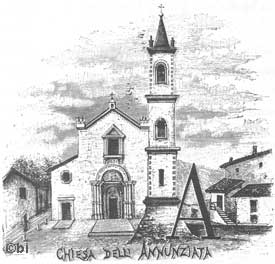 Maria SS. Annunziata is
Maria SS. Annunziata is  It is not possible, however, establishing what the original outside structure of the church, was, only the Christ's chapel and the column makes you think that could be part of the primitive building.
It is not possible, however, establishing what the original outside structure of the church, was, only the Christ's chapel and the column makes you think that could be part of the primitive building.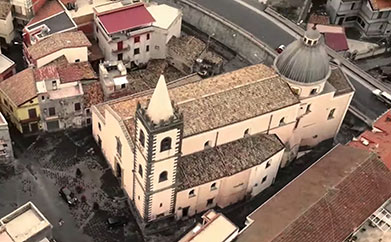
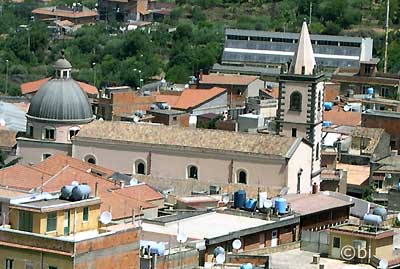

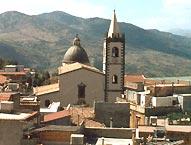 Images of the exterior of the Church dedicated to the Madonna Annunziata, Patron Saint of Bronte. The drawing at the top right is a view of the Sanctuary from the late 19th century taken from the History of the City of Bronte by p. Gesualdo De Luca (engraving by Angelo Colombo based on a drawing by Agostino AttinÓ, 1883).
Images of the exterior of the Church dedicated to the Madonna Annunziata, Patron Saint of Bronte. The drawing at the top right is a view of the Sanctuary from the late 19th century taken from the History of the City of Bronte by p. Gesualdo De Luca (engraving by Angelo Colombo based on a drawing by Agostino AttinÓ, 1883).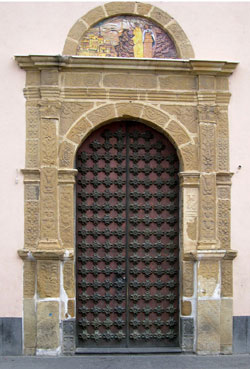 The exterior of the church, due to the design of the bottoms and openings of the mighty structure of the bell tower, is significantly influenced by local architectural concepts and construction techniques.
The exterior of the church, due to the design of the bottoms and openings of the mighty structure of the bell tower, is significantly influenced by local architectural concepts and construction techniques.